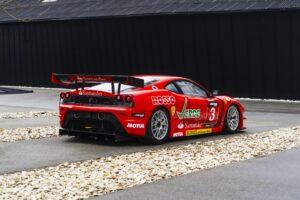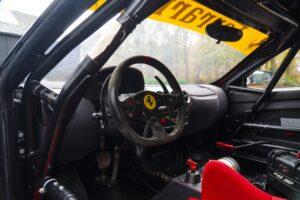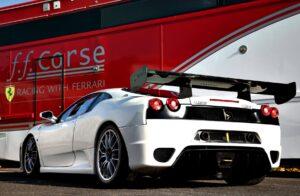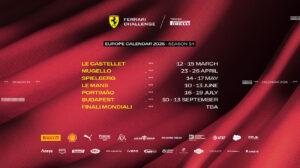 More details and pictures HERE at Classic Driver
More details and pictures HERE at Classic Driver
Asking price 268.000 EUR
2006 Ferrari F430 GT3 Scuderia – Chassis 152599-SC22
One of Only 25 Scuderia-Specification examples ever built
A rare opportunity to acquire one of the most desirable customer-racing Ferraris of the modern GT era.
Chassis 152599-SC22 is the 25th of 54 Ferrari F430s built to GT3 specification by Ferrari Racing Partner Kessel Racing, and later received the coveted 2010 Scuderia GT3 upgrade — a transformation applied to only 25 cars worldwide – this being number 22 of 25. This factory-aligned evolution brought significant improvements in aerodynamics, chassis dynamics, and performance, making these Scuderia-spec cars the most sought-after F430 GT3s, and very powerful – over 550bhp.
When delivered new the chassis number was 152599-25 (the 25th GT3 built, but this changed to 152599-SC22 when it became the 22nd car upgraded into Scuderia spec)
SC22 was owned and raced in period exclusively by Hector Lester, who shared the car with late GT racing legend, Allan Simonsen. Together they had multiple outright victories, the final one being in October 2010, where Lester and Simonsen defeated the whole British GT pack at Donington.
With its pedigree as a race-winning Ferrari GT car, its rare and spectacular performance, and total originality, chassis SC22 is both highly eligible for a wide range of premier historic racing meetings, but also a perfect addition to any great Ferrari collection.
SC22 is eligible for the following:
Club Competizioni GT (Corse Clienti)
GT3 Revival by Peter Auto/SRO
GT3 Legends by MRL
Daytona / Sebring Classic
Monterey Historic
Additional top-tier events worldwide
A potential front-running entry in the early Peter Auto/SRO GT3 Legends class, and MRL class, or simply a fabulous looking and sounding car to enjoy on private track days and with Ferrari Corse Clienti.













